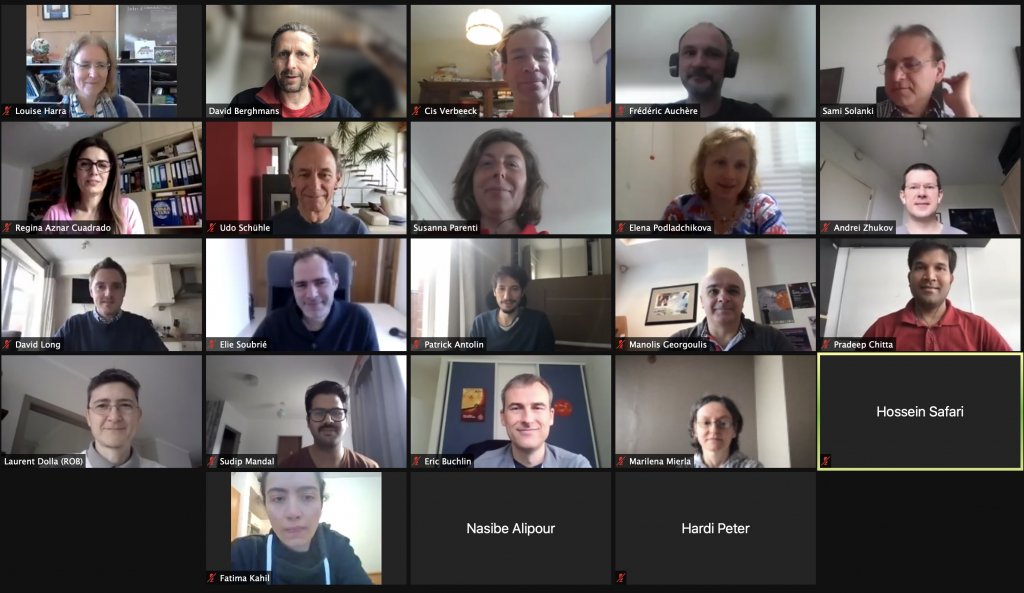EUI First Light – 1 year!
The 3 telescopes of the Extreme Ultraviolet Imager (EUI) onboard Solar Orbiter opened their doors on May 12, 2020, to photograph the Sun. This is exactly 1 year ago. This ‘First Light’ was a crucial step to get the EUI telescopes up and running and pave the path to research.
Our space telescope experts figured out how to work from Earth with the telescopes cruising through deep space. Answers to critical questions needed to be found: which exposure time produces the best image, how many pictures we can take per minute, do we have to fine-tune the data compression by the onboard computer, where are the bad pixels in the sensors, do the telescopes understand the uploaded computer commands, etc.?
The EUI support team worked relentlessly to build a firm basis such that the EUI telescopes can take pictures in the best possible conditions, with the most performant software and smoothly running techniques.
|
EUI on Its Voyage to the Sun |
Researchers everywhere are very eager to analyse such high quality and high resolution pictures. The first light of May 12, 2020, was already an excellent foretaste leading to an immediate success by revealing ‘campfires’ on the Sun. Researchers started debating the impact of this discovery. It might give an answer to the long-standing mystery of why the solar atmosphere is much hotter than the solar surface.
One year after launch, the EUI telescopes are ready for their scientific mission that will officially start on December 27, 2021. Scientists worldwide are preparing to use the EUI instrument, together with other instruments on Solar Orbiter, on different space missions and on the ground.

For the EUI online scientific conference on May 10, 2021, 340 participants from all over the world joined.
The world has changed during the past year since EUI took its first images. With the ongoing pandemic, scientists cannot meet any more in scientific conferences or workshops to coordinate their research or give training in summer schools for future scientists. The Solar Orbiter scientists are therefore massively embracing new ways of interacting, learning to set up online communities, chat-room channels, and ‘conference’ presentations streaming over the internet. Often scientists are learning the tricks from their teenage children. As the end of the pandemic hopefully comes in sight, scientists are faced with the question of whether they want to go back to continuous worldwide travelling or whether the growing climate-awareness will make the new ‘worldwide teleworking’ trend stay.
EUI paves the way for more, better and in-depth science. Expectations are high.
The EUI website: https://wwwbis.sidc.be/EUI/index.php/
